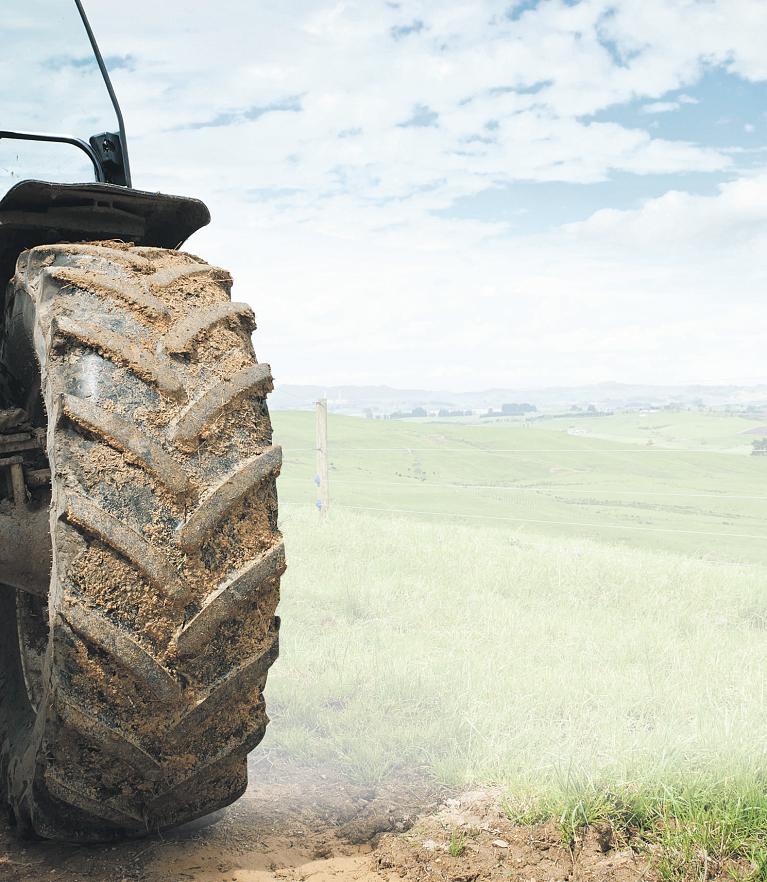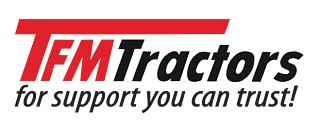





Horticultureand arable farming comprise only 5% ofWairarapa’s economyand 2% of itsland area, according to Te Ara, theEncyclopedia of NewZealand, butarable farmers aredescribed as the unsungheroes of NewZealand’sprimary sector by theFoundationofArable Research (FAR)
Theindustryisworth $2.1billiontothe New Zealand economythrough the production of grain,seed andother crops. FARreports thatNew Zealand’s arable farmers grow more than 40 different grain andseed crops, with some farmers havingupto20crops on theirfarmina singleyear
Arable and forage crops, betweenthem, arealsothe drivingforce behind our $20 billionlivestockindustrybecause they arethe sourceofseed foranimal pastures,aswellasproviding fodder, grain and silage forsupplementary animal feed
Highlyproductive land-use
TheMinistryofPrimary Industries (MPI) reports that because of our small size, NewZealand’sarableindustryis able to “adopt newcrops,systems and productionmethodsrelativelyquickly in responsetomarket signals.”Our innovativecropmanagementsystems aresaid to be the key to the arable industry continuingtobeasignificant contributor to ourlocal economies
compared to hisnativeAustralia,we have “smallbitsofland and we squeeze everything we can from ourland -so there’sless wastage.”
MPIsaysthatNew Zealand’s arable growers arethe mostproductive in the world, holding the worldyield recordsfor both wheatand barley We’reabletoproducesuch high yields due to ourgenerally favourable climate (rainfall,temperature), good soils,high performingcultivars,effectiveuse of irrigationand extremely skilledgrowers
Robert Hicksonisa Castlepoint farmer andthe actingChair of Wairarapa Federated Farmers’ArableIndustry Group. He agrees that in New Zealand, CONTINUEDOVER PAGE


Andour arable systemsare unique in that they generally include livestock. This contributes to weed,pest and disease control, as well as nutrient managementand soil quality.
In its June 2024 Situation and Outlook forPrimaryIndustries,the Ministryof PrimaryIndustries reports that:
Theyearto30June2024 is expectedtoshowa12% increase in arable exportrevenue overall
Domestic grain prices have fallen over the lastyear anddemand has been subdued

Looking to 2024/25, increases are forecast in vegetable seed and ryegrass.But these will be offset by decreases in other categories, to result in steady exportrevenue overall.
MPI forecasts improved grain quality andyields but not higher It also forecasts declines thecosts of agrichemical fertilisers,and fuel.

RobertHickson notes thatmost Wairarapa dairyfarmers grow their own maizeorother forages.Asdosheep and beef farmers, likehimself,for finishing weaned lambs or growing outyoung capital stock
“It’snot economical to buy feed in for lambs,” he says.“I’mkeeping an eyeon soil moisturethis year.The winter has been drier forusthan anormalwinter and we maygointospring without enough subsoil moisture. If that’sthe case,the strike rate forour forage crops, as well as the yield,mightbedown.”
Robertsaysthat, if that’sthe case,he mayneed to sell morelambs than usual to finishingfarms to be grown out and then “spend time in the pub complaining about howdry it’s been.”
Just the rightamountofwater is the key.But,there’sstill afew weeks yet, and anything could happen between nowand early October,when Robert to plantout his wing brassicas
NIWA’s Seasonal ClimateOutlook for Wairarapa includes:
Periods of unseasonable warmth from September
Apossible increase in rainfall in the months to October.
Soil moisture levels may be near normal, assuming we get abit more rain.


Because catchment-level river flowsfrom MayJuly were below normal, flows will recover only gradually -this may adversely impact water availability for agricultural applications.

We are100% New Zealandownedand operated. All of ourproducts are produced from all-natural limestone,quarried righthereinWairarapa. Wedon’tuse unnecessary additives or chemicals andofferbothorganic andnon-organicoptions



Maizegrain is critical for poultryand pigfeed, but alsofor dairy.DairyNZ has reportedthat“maizeisavital crop formanydairyfarmers andrepresents asignificant investmentintimeand resources”.
Grownonthe dairyfarm, maizecan add valuetofeed supply, help mitigate climaterisks,extract soil nutrients from high fertilityeffluentpaddocks,and be used as a‘break crop’inthe pasture renewal process.
TheArableIndustryMarketing Initiative provides market intelligence to enable
growerstomake informed decisions aboutplantingand selling. Oneofits surveysofmaizegrowers found, at a national level:
Thesizeofthe 2024NZharvest of maizegrain and maizesilageas at 1June 2024: Theaverageyield of maizegrain (11.6t/ha) forthe 2024 harvest andthe averageyield of maizesilage(21.9t drymatter (DM)/ha) forthe 2024 harvest were bothuponlast season.
Thepercentage of our 2024 maizeharvest sold as at 1June 2024: Most (88%)ofthe total maize graincrophad been sold,but this was less than last year.Sale of maize silage was100% completeasat 1June 2024, which wasnormal.
















Sowing intentions forthe spring of 2024: Formaizegrain, sowing intentions were estimated to be 27% lowerthanlast season and,for maizesilage, 12% lower.
These findings at anational levelare more positivethanthe local Wairarapa 2024 season.
Jo Balfour, from PGG Wrightson,says the local grain market is still under abit of pressure.She talks about the idea of more farmers investing in silosto storegrain so they’ll be less affected by fluctuatingyieldsand prices.She recognises,however,thatthoughdairy farming is startingtolookbrighter, dairy farmers arestill keepinganeye on their costs.



As emergencyfeed stacks geteaten, Jo anticipatesthatinquirieswillstart aboutmaize silage forthe season ahead,“butthiswilldepend on what ourspringlooks like.Ifwehavea good early spring andgrass silage is plentiful,farmersmay not need to seek supplementaryfeed.”
Jo adds that“all ourfarmers, whether they areusers or growers,will be lookingatcoststructures and where they can trim costs whilestill getting agreat result.Itwillbeimportant to make informed decisions with trusted advisors and considerall options includinggrain contractsora cropping plan.”





some controloverinclude the likes of cultivar selection, adecentspray out,fertiliser,and controlofpests and weeds.





ArecentAgricom cropping guide says thatwith the rising costs of importedfeeds plus a degreeofuncertainty within supplychains,therehas never been abetter time to explore the cost benefitsof qualityhomegrown forage crops to fill summer or winter feed deficits.
Gavin Harris, afield representative from PGG Wrightson, knowsabout forage crops.“Farmers will be preparing to plant theirsummer cropssuch as brassicas,lucerne,herbs andclovers in spring readyfor fattening their lambs over summer. Also,they’ll be planting kale,swedes,and fodder beet crops for grazing next winter, to take the pressure off pastures whenfeed demandsare high,”hesays.
“Thereare several importantfactors thatyou need to get rightfor agood result,”Gavin says.The oneswehave

“Startwith asoil test,”Gavin suggests, “and then address the timing and the inputs required.”
Gavin alsotalks about sowing methods and the decision between ground cultivation vs directdrilling.Both aregood options under the right circumstances,and youcan have excellent results with either approach.
Cultivation is agreat waytoprepare agood seed bed.However,thereare advantages to directdrillinginthe spring including preserving ground moistureand not disturbing topsoil fertility. It is also aquicker process and potentiallyless expensivethan full cultivation. Thedisadvantages can includehigher pest pressureand trying to drill through thatchoruneven surfaces. Gavin says,“the uncontrollable weather canalsoimpactthe outcome Always keep an eyeout forslugs,they can be devastating.”
The Einböck PNEUMATICSTAR is the ideal machine for seeding large areas at very low cost.
•Apneumatic seeddistribution systembroadcasts theseeds accurately (upto6mworkingwidth).
•The 4floating sections with 7mmtinespreparethe soil surfaceand createsa good conditionfor thegerminationof the pneumatically delivered seeds.
Thedecision around seed treatment options is another importantfactor. “Treated seed is amust when direct drilling.”Gavin says.“This givesshortterm protection until the plants get established.”If cultivating the ground, however, “farmers mightget away with untreatedseed in some circumstances.”
Nathan and Kate Williams have regularly been in the newsand wonawardsfor their no-tillage approach to farmingthe Otahuao station near Masterton.
Thecouple has been reportedtosay that“putting arable crops into pasture each spring is not alwaysthateasy but no-tillage has giventhe soil increased resilience, allows morefrequentand hencemoreproductivecropping cycles without damaging thesoilstructure and reduces the risk of flooding damage.”Thefarm’sflatsare susceptible to flooding in spring










Increasingly,farmers are asking questions about environmental functionality along with production performanceoutcomes.
Arable cropping has alow environmental footprint. It contributes less than one percent of New Zealand’s greenhouse gas emissions.New Zealand’s arable soils have high carbon content(3-5%), with more than70% of arable farms in New Zealand surpassing the recommended national standards for soil quality(carbon content, aggregate stability), according to MPI. This makes our arable industryatop performer by international environmental standards Irrigation is avaluable managementtool forarable growers,allowingthem to maximise their yields and grow abroader range of crops over alongertimeperiod. It alsohelps keep crops healthyand resilient to biotic and abiotic stress factors.The useofsensor and application technologies means thatgrowers only apply water whenand where it is needed foroptimum crop growth.
An example of thattechnology was profiledbythe Wairarapa Times-Age in its March2024 Rural Outlook Feature. The Glen Eden farminPonatahi wasfeatured, with its circle of cropsofall types and with different waterneeds, being irrigatedwisely by asystemthatcan sense wherewater is needed,and how much. “It’s targeted and efficient,”owner Mark Guscott wasreportedtosay
MPI has researched the practicality of climate change adaptation forthe cropping sectorand forarable crops
Thebenefitsofadvanced irrigation equipment, such as the Guscotts,and expanded areas of irrigation were identified in its research. These can improvethe efficiencyofboth water and nutrient use,increase yieldpotentials, and reduceenvironmental impacts
MPI also identified other best managementpractices or ‘tactical options’thatwerealready being applied by farmers such as changing sowing dates, varieties and crop species.Such changes allowfarmers to manipulate the matching between crop development stages and prevailing weather
Thedevelopmentofnew genotypes, using traditional breeding or moleculargenetic techniques,isa ‘strategic’option which -ifprogressed -may enlarge the pool of better adapted varieties
Thebenefitsoftransformational adaptive options such as the designofnew broad acrecropping systems,perennial cereals,increased crop resistance through microorganism association, or the migration to different land uses or economic activities,however,are said to be “highly uncertain”.
That’s because they depend on “external factors such as market responses, technological advances and availability of production resources(land,water, energy) in New Zealand and also in other global cropping regions,”wroteMPI.
